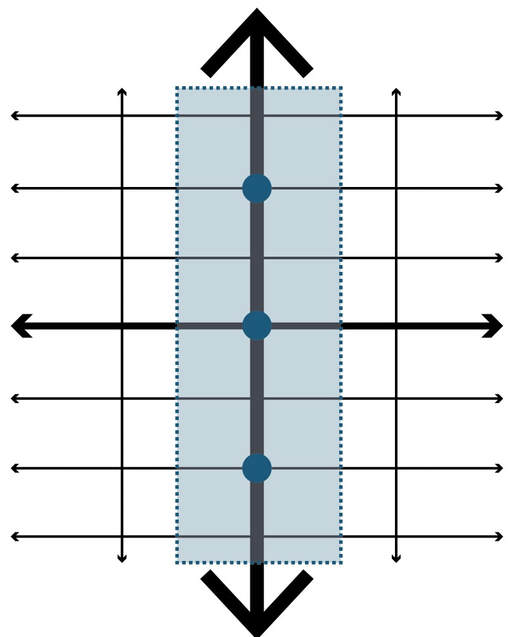Identifying Areas of Study
Transition Zones may not be appropriate between the interface of every Avenue / major street and Neighbourhood throughout Toronto. As such, the City should undertake a process of identifying potential Transition Zones. To initiate this, preliminary study area boundaries should be established, based on existing Official Plan Urban Structure, Land Use and Major Street designations. For more information on these designations, please click on Policies and Regulations.
Reviewing and EvaluatingThe preliminary study area boundaries should then be reviewed and evaluated. This should be undertaken within each of the City’s four Districts – Toronto and East York, Etobicoke and York, North York, and Scarborough. In doing so, City Staff should identify a set of evaluation criteria, and prioritize the review and evaluation of smaller study area segments based on a high-level understanding of perceived market demand and growth potential. At a minimum, the detailed review and evaluation should consider:
|
Collaborating and Coordinating
A comprehensive city-wide evaluation of the above criteria will require close collaboration and coordination between several of the City’s divisions, offices and staff. Upon completion of the review and evaluation, the City should make necessary refinements to the study area boundaries. This will require identifying specific segments of Avenues and Major Streets, which would serve as the central spine of Transition Zones. It will also require defining the geographic limits of each Transition Zone. These may vary from one segment to another, based on typical lot, street and block conditions as well as other site or area-specific considerations.
So, we understand that Transition Zones may not be appropriate everywhere, and we have a sense of how best to review and evaluate potential candidates. Throughout the City of Toronto, there are likely to be a variety of different conditions, which may impact the performance of Transition Zones relative to the evaluation criteria that we have identified. How do we account for this? Please click on Classifications to learn more.
So, we understand that Transition Zones may not be appropriate everywhere, and we have a sense of how best to review and evaluate potential candidates. Throughout the City of Toronto, there are likely to be a variety of different conditions, which may impact the performance of Transition Zones relative to the evaluation criteria that we have identified. How do we account for this? Please click on Classifications to learn more.
